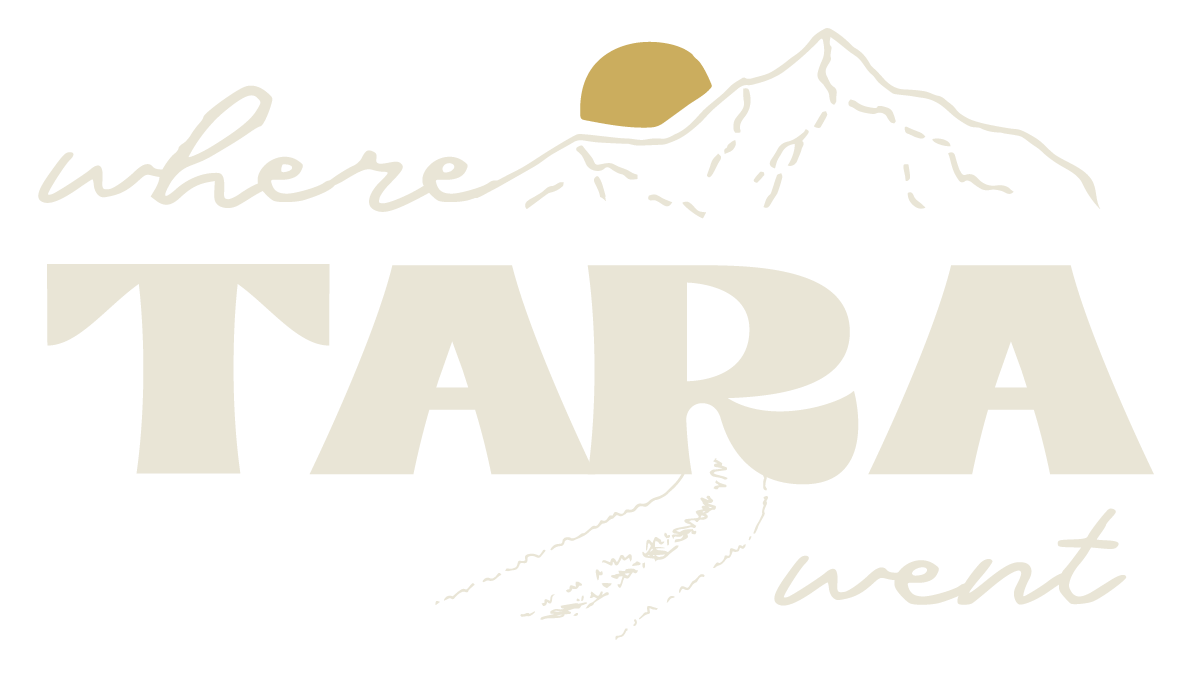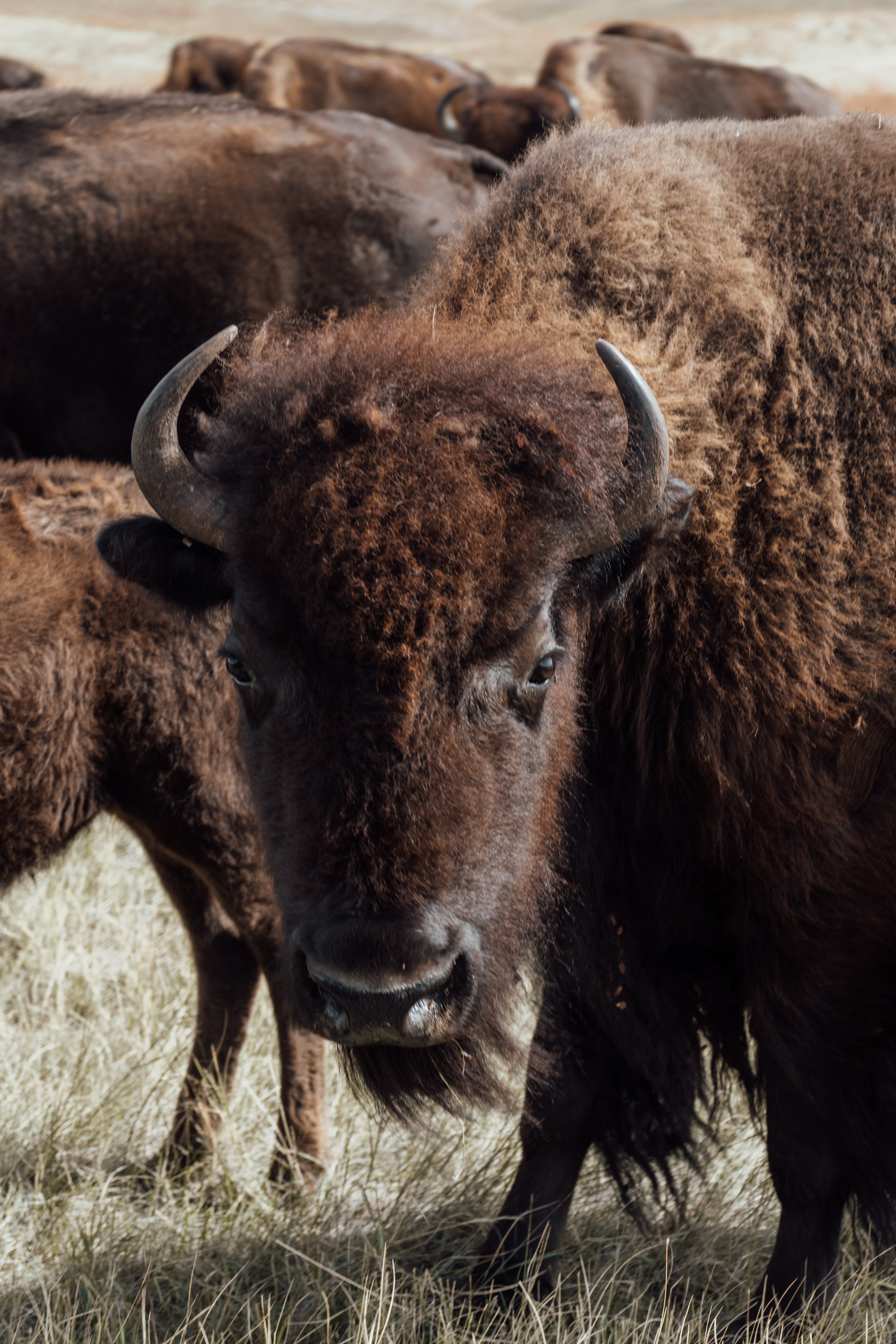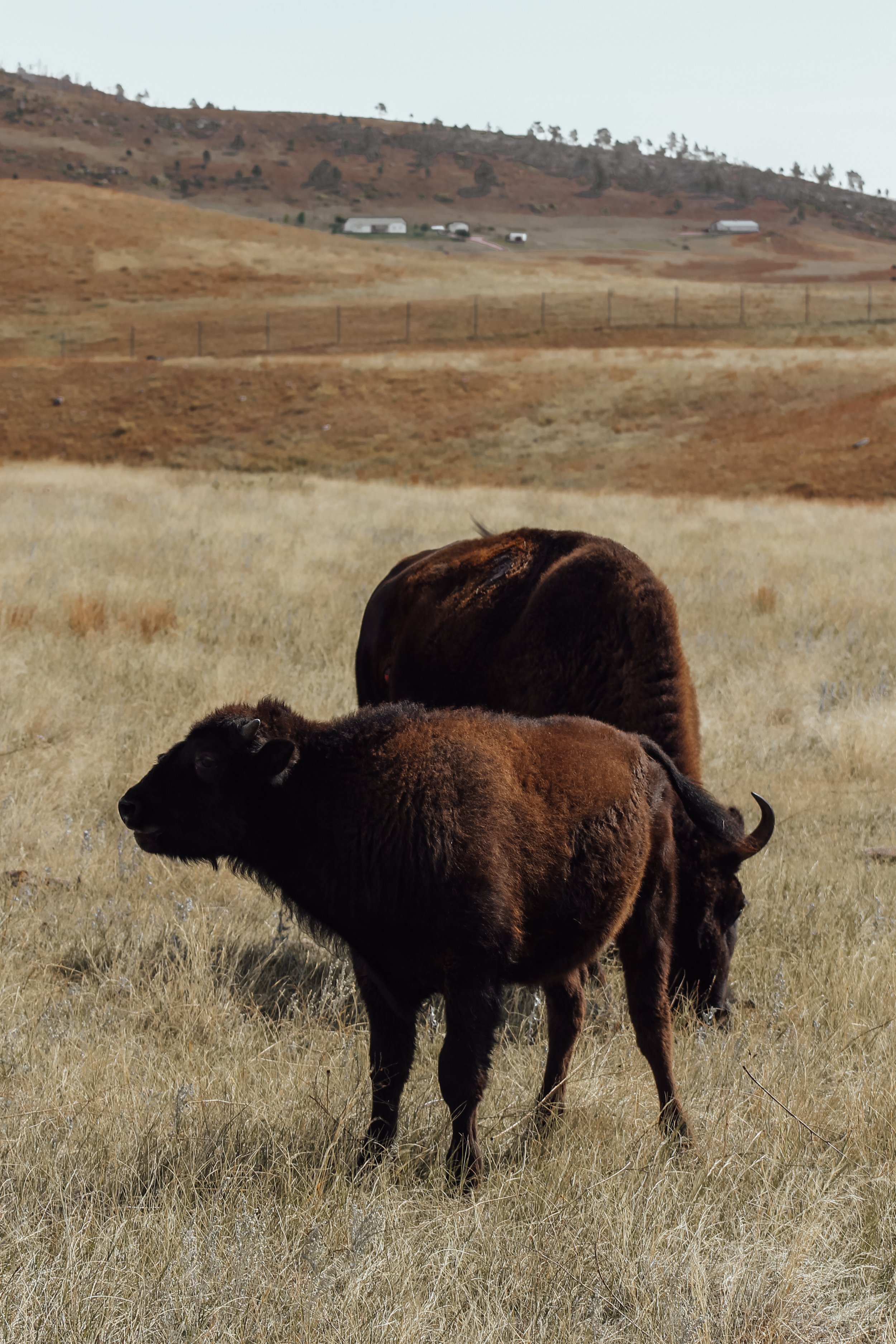Custer State Park’s Annual Buffalo Roundup: Helpful Local Tips
Every year, Custer State Park in South Dakota puts on their annual Buffalo Roundup to maintain a healthy, thriving herd. Here’s everything you need to know about planning a trip to the Buffalo Roundup, including what to expect, where to stay, and what you can’t miss while you’re there.
Once every year, dust flies as cowboys on horseback gallop behind a herd of over 1,000 buffalo. The Custer State Park Annual Buffalo Roundup It is a tradition that maintains herd health and brings in tens of thousands of visitors to Custer every year. It brings tourists to western South Dakota in droves and, for locals, marks the autumn season in an almost ceremonial way. So when I was invited by the South Dakota Department of Tourism for an exclusive look behind the scenes, I jumped at the opportunity.
Now, looking at my photos from the 56th Annual Buffalo Roundup allows me to relive the magic of the day I stood in the back of a roaring pickup truck as it bobbed through the Black Hills behind the blur of cinnamon-colored buffalo. In this guide, I’ll share insight into the event so that you know what to expect, including all the details about what to pack, where to stay, and what to do in the nearby area.
land acknowledgment ↴
The Black Hills (Paha Sapa/He Sapa) of South Dakota is the ancestral, spiritual, and right homeland of the Lakota Sioux. This area is especially significant because it was promised to Chief Red Cloud in the Fort Laramie Treaty of 1868, guaranteeing perpetual ownership by the Great Sioux Nation. The U.S. Government is long overdue in honoring the many promises it made over 150 years ago. Ethical tourism is one simple way to support Indigenous communities that still exist in these areas.
the history of Custer State Park + the Buffalo Roundup ↴
Custer State Park is South Dakota’s first and largest state park. Established in 1912, the park was originally created to preserve the dwindling native bison population. Custer State Park’s terrain varies widely and covers over 71,000 acres of pine-covered mountains and rugged prairie. The landscape is home to a bevy of wildlife, including white-tailed deer, antelope, elk, and American Bison (commonly referred to as buffalo).
An annual Buffalo Roundup was established as a tradition in 1965 as part of Custer State Park’s management plan to maintain a healthy balance between herd numbers and how much food is available. During the yearly event, public spectators watch from a designated viewing area while experienced horseback riders round up the herd of nearly 1,500 bison. Once the bison are rounded up, sorted out, and checked for good health, including vaccinations for the newest members of the herd and checks for pregnancies. After the roundup, some are sold at an auction that takes place in November.
what to expect at the Buffalo Roundup ↴
Let’s get the logistics of the day out of the way! The entire event is free and open to the public. There is no admission fee for the Buffalo Roundup, nor is a park entrance pass required for the day. Because it’s free and due to it being Custer’s biggest annual event, you’ll need to arrive early. The parking lots for the Roundup open at 6:15 AM, but you’ll want to be there early. Prepare to wait in line! Be warned: it can take another hour to get out of the parking lots after the event.
There are two designated viewing locations/parking lots. The North Parking and Viewing can be reached by heading south from the State Game Lodge on Wildlife Loop Road. The South Parking and Viewing area can be reached east on Wildlife Loop Road near Blue Bell campground. Once you have parked, you cannot switch viewing locations. While dogs are allowed, I would discourage you from bringing them. Pets and wild animals don’t typically mix, and you cannot have your dog out of a vehicle during the roundup, meaning they’d have to stay inside your vehicle for approximately 2 hours during the event.
Once you arrive and park your vehicle, you’ll be able to partake in the catered “cowboy breakfast” which typically consists of pancakes, sausages, and beverages. Breakfast is available at both viewing locations starting from 6:15 AM. Breakfast is not complimentary, so bring cash with you.
At 9:30 AM, the roundup officially begins and lasts approximately two hours. During the roundup, nearly 20 cowboys and cowgirls blitz over the hills behind the bison herd, whips cracking on the ground beneath them in an attempt to direct the buffalo.
safety at the roundup ↴
The park’s bison herd roam freely and is often spotted grazing along Wildlife Loop Road. While bison seem docile, they run remarkably fast and weigh up to 2,000 pounds. The bull bison have been known to be aggressive, which is why they are not included in the roundup. Instead, they can be seen elsewhere in the park during Roundup weekend. Bison attacks do happen! It is advised that visitors stay inside their vehicles when looking at the park’s wildlife, especially its bison population.
best things to do in + around Custer ↴
If you’ve traveled to Custer for the Roundup, I recommend making the most of it by exploring the state park and surrounding area!
Cathedral Spires
Cathedral Spires is a lovely little trail that you can do if you’re short on time. The hike is only a .75-mile trail winding through the area’s signature granite spires. The trail can get a bit muddy when it rains, and there is some scrambling, but generally speaking, it’s an easy trek. I suggest wearing proper hiking shoes to help support your ankles on the rockier parts of the trail.
Sylvan Lake
Sylvan Lake was created in 1891 when Theodore Reder built a dam across Sunday Gulch Creek. It’s arguably the most recognizable of Custer State Park’s lakes and a preferred swimming spot in the summertime amongst Black Hills locals. The lake is also a favorite wedding venue in the area! Some tourists visit the lake because they have seen the Nicolas Cage movie "National Treasure 2: Book of Secrets.” Sylvan Lake Lodge houses a general store, watercraft rentals, and information regarding hiking trails and fishing licenses. After the buffalo roundup, stroll the perimeter of the serene lake, or cool off with a swim.
Crazy Horse Memorial
Looming in the distance as you drive along the highway stands Crazy Horse Memorial. In 1939, Lakota (Sioux) Chief Henry Standing Bear asked Korczak Ziolkowski to create a monument of Crazy Horse on an enormous scale. Ziolkowski began the development of the sculpting in 1948 and worked on it until his death, when his wife Ruth took over the project. Before Ziolkowski died in 1982, he managed to block out the rough contours of the Crazy Horse carving so that someday it will depict the legendary Lakota leader on his horse and pointing to his home famously declaring, “My lands are where my dead lie buried.”
Unfortunately, the memorial is still a work in progress. In fact, Crazy Horse Memorial is the world’s largest art project in progress, measuring 563 feet high and 641 feet long. People are hopeful that by 2035 the arm, hairline, hand, shoulder, and the top part of the horse’s head will be finished. In truth, it’s likely to take longer. Over the last 24 years since the face was finished, not even the finger of Crazy Horse pointing towards his tribal land has been completed!
While the carving remains unfinished, the site’s visitor center is. It includes a museum to help Indigenous communities preserve their unique cultural identities and a university with a medical training center.
ADMISSION | starts at USD $15 for vehicles
Mount Rushmore Memorial
Without a doubt, the most visited landmark in the Black Hills is Mount Rushmore Memorial. Over 2 million people visit the giant carvings of Lincoln, Washington, Jefferson, and Roosevelt each year. The sculpture project, designed by Gutzon Borglum and his son Lincoln Borglum, took decades to complete (from 1927 to 1941).
Originally, however, a South Dakota state historian, Doane Robinson, had the idea of craving the faces of American West heroes into the rock, including Oglala Lakota chief Red Cloud, Lewis and Clark, and Sacagawea. Borglum believed that the carving would have broader appeal if presidents’ faces were depicted. As Borglum took on the project, he picked four presidents whom he felt represented the development of the nation.
It’s important when talking about Mount Rushmore, however, to note that Mount Rushmore was carved on land illegally taken from the Sioux Nation in the 1870s. The Sioux continue to demand the return of their land, and many critics of Mount Rushmore call it the “Shrine of Hypocrisy.”
The summer months (June, July, and August) are the busiest months for tourists to visit. September and October are also relatively busy due to the autumn foliage in the area, though the weather is a lot milder. If you’re crowd-sensitive, I would attempt to visit the memorial before 9 AM.
ADMISSION | free to visit, must pay for a parking pass
Chuckwagon cookout
Have a truly Western experience by booking a Chuckwagon cookout excursion. Every evening through the tourist season, This is a fun activity that’s suitable for families and children. Groups are taken on a wagon ride to a dinner show, all of which lasts approximately 3 hours.
BOOK | Hayride + Chuckwagon Cookout
Wind Cave National Park
It’s only a 30-minute drive from Custer State Park to Wind Cave National Park. It was proclaimed a national park by former President Theodore Roosevelt in 1903, making it the 6th national park in the U.S. and the first cave to receive national park designation anywhere in the world. Wind Cave contains 95% of the world’s discovered calcite boxwork formations! Even more impressive to me is the fact that it’s the 7th largest cave in the world.
Wind Cave National Park is one of the best national parks in the U.S. for wildlife viewing. Here, above ground, you can see bison, elk, pronghorn deer, and prairie dogs. Some people claim that it rivals Yellowstone for wildlife— which is saying something! Whether you’re there for the caves or the animals, I promise Wind Cave will surprise you.
ADMISSION | free
Little Devil’s Tower
Little Devil’s Tower is highly underrated as a Black Hills Hike. This 3-mile out-and-back trail starts roughly 1 mile east of Sylvan Lake off Highway 87. The hike starts off easy, but quickly turns into a series of switchbacks as you gain elevation. Getting to the top of Little Devil’s Tower requires a scramble through narrow crevices, but the views are worth the work. From the summit point, you can see the famous Black Hills’ granite spires and Black Elk fire tower (marking the summit of Black Elk Peak).
Black Elk Peak
Black Elk Peak (formerly Harney Peak) is the highest peak in South Dakota. The views of the granite spires from the summit, especially in the autumn during the buffalo roundup, over the park are spectacular. The trailhead is found at Sylvan Lake. Black Elk Peak hike isn’t difficult, but you do gain 1500 feet of elevation over the course of the ~8-mile track. Essentially, you can expect a long trail with a gradual incline.
Needles Highway
Needles Highway is like a John Keats poem come to life. The 14-mile road winds through rugged granite mountains, enveloped by Ponderosa pines on either side. The former governor of South Dakota marked the road on horseback before its construction was completed in 1922. Please note: Needles Highway typically closes to vehicles after the first snowfall of each season (usually in October). The road reopens in April.
The drive is spectacularly scenic, with views of the area’s famed granite spires the entire length of the journey. It takes approximately an hour to drive to completion, so plan accordingly and give yourself time to drive at a leisurely, safe place.
You’ll want to check your vehicle fits through the highway’s two unique granite tunnels:
Iron Creek tunnel | 8’9” wide and 10’10” tall
Eye of the Needle tunnel | 8’ wide and 9’9” tall
where to stay for the Buffalo Roundup ↴
Staying near Custer State Park will make it convenient to get to the viewing locations early in the morning before the event begins. There are a number of small towns nearby to pick from, all well-equipped to welcome travelers.
Towns with lodging near Custer State Park:
Custer | a 20-minute drive from the Visitor Center
Keystone | located roughly a 30-minute drive from the Custer State Park Visitor Center, home to Mount Rushmore, very touristy, great starting point for the Peter Norbeck Scenic Byway
Rapid City | a 40-minute drive from the visitor center
Hill City | a 45-minute drive from the visitor center, scenic, home to the Alpine Inn’s famous food
Where to stay in Custer:
Bavarian Inn | quirky accommodation on the edge of Custer town
Holiday Inn Express + Suites Custer | sophisticated hotel rooms with amenities
Comfort Inn + Suites | basic hotel rooms in a convenient location
Best Western Buffalo Ridge Inn | basic hotel rooms in a convenient location
We love using Booking.com to book the best places to stay around the world.
best restaurants in Custer ↴
For such a small city, Custer has a surprising number of eateries. The town’s dining options have expanded a lot over the years, but there are a number of establishments that are well-cemented into the fabric of Custer.
Skogen Kitchen | upscale dining in a cozy atmosphere with an innovative menu
Black Hills Burger + Bun Co. | simple, comfort food made with local ingredients in a casual restaurant setting
Purple Pie Place | serving a selection of homemade pies by the slice
Mt. Rushmore Brewing Company | a lively microbrewery with pizza and chicken wings to accompany a bevy of beer offerings
Baker’s Bakery + Café | a homestyle restaurant that serves classic breakfast and lunch from April to Roundup weekend every year
want more roundup ↴
don’t forget to subscribe
map ↴
Find everything you need for the annual Custer State Park Buffalo Roundup on the map below.


































